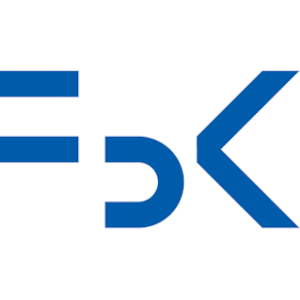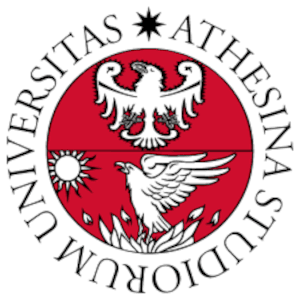| Presentazione |
Titolo, Autori e Abstract |
Presentation |
Title, Authors and Abtract |
|
Designing and development of a robotic loading machine for an automated warehouse
for pharmaceutical products
Autori
Authors
Prof. Luigi Palopoli, Università di Trento
Abstract
The project is related to designing and developing a robotic loading machine for an automated warehouse for pharmaceutical products. The products currently available in the market have severe limitations in the loading operation's throughput and the ability to manage boxes with a cylindrical shape. UNITN and FbK have joined their efforts in developing the machine from the ground up. An innovative layout for the machine, the adoption of state-of-the-art robotic technologies, and the development of an innovative perception subsystem were the areas where the two research centres produced the most tangible results. The machine has been on display at an important fair and has become one of the most sophisticated products in the customer's portfolio.
|
|
HEPSYCODE Demo: HW/SW CO-DEsign of HEterogeneous Parallel dedicated SYstems
Autori
Authors
Prof. Luigi Pomante, Università degli Studi dell'Aquila
Dr. Vittoriano Muttillo, Università degli Studi dell'Aquila
Abstract
"In the last few years, the spread and importance of embedded systems have been even more increasing but it is still not yet possible to completely engineer their system-level design flow." The previous sentence opens the main abstract of the HEPSYCODE methodology and tool demo (www.hepsycode.com). But, what is HEPSYCODE and what are the main issues related to this methodology? To answer such a question, it is needed to know the main aspects related to HW/SW Co-Design in terms of design flow and activities within the context of the so-called "Electronic Design Automation" (EDA) domain. By defining the "design flow" as a sequence of steps that lead to the implementation of an application-specific, possibly embedded, digital electronic device, each step can be partially or fully automated using a set of SW tools (i.e. EDA Tools). In such a context, the choice of the best HW/SW implementation technologies can be very critical in terms of non-functional constraints and time to market. This problem, otherwise, has been simply described as a trade-off among various design metrics (performance, power, size, cost, etc.) and, nowadays, there is no difference between what hardware or software can implement from the functional point of view. Furthermore, today, most of the time is spent for simulation activities (using different modeling languages at a different level of abstractions) and to validate and verify the possible solutions taken into account by the designers. So, HEPSYCODE offers an innovative methodology and a toolchain to manage the main issues related to the design of complex embedded systems taking into account different metrics to produce as output a suitable solution considering different application domains such as automotive, aerospace, railway, etc.
|
|
Specifying and Testing Railway Interlocking Systems
Autori
Authors
Arturo Amendola, Rete Ferroviaria Italiana (RFI)
Alessandro Arenella, Rete Ferroviaria Italiana (RFI)
Roberto Cavada, Fondazione Bruno Kessler (FBK), Digital Industry Center
Alessandro Cimatti, Fondazione Bruno Kessler (FBK), Digital Industry Center
Mirco Franzago, Rete Ferroviaria Italiana (RFI)
Alberto Griggio, Fondazione Bruno Kessler (FBK), Digital Industry Center
Fitsum Kifetew, Fondazione Bruno Kessler (FBK), Digital Industry Center
Davide Prandi, Fondazione Bruno Kessler (FBK), Digital Industry Center
Giuseppe Scaglione, Rete Ferroviaria Italiana (RFI)
Angelo Susi, Fondazione Bruno Kessler (FBK), Digital Industry Center
Matteo Tessi, Rete Ferroviaria Italiana (RFI)
Abstract
Functional specifications of complex embedded systems are often written in natural language but can be ambiguous and subject to different interpretations. This phenomenon emerges in several domains such as avionics and automotive, and is particularly evident in the specification, verification and testing of railway Interlocking systems. Different regulations and technical specifications expressed in natural language documents must be reconciled and interpreted to design and evolve digital systems.
We propose a Model-Based, tool-supported methodology for the specification, implementation verification and testing of railway Interlocking system, to ensure product standardization, smooth specification of requirements, and automated code generation and verification of the system. The approach relies on a Controlled Natural Language (CNL) to support railway experts having deep knowledge on regulations and provisions in writing the specifications of interlocking procedures and the related test suites using their own jargon. From the CNL specifications, models in SysML and C/Python code are automatically generated, thus retaining full traceability between all the artefacts. Finally, test suites can be specified using the CNL to support railway experts during the validation of the overall interlocking system. The approach is supported by the tools AIDA and TOSCA that support the specification of the Interlocking system and its testing respectively.
|
|
Human tracking in industrial environments
Autori
Authors
Prof. Marco Cristani, Università di Verona
Dr. Federico Cunico, Università di Verona
Abstract
The demo will present the tracking application, in which a subject will be detected in the ICE lab and mapped on a 2D plant, continuously over time, following the movements within the laboratory, using the network of cameras in ICE.
|
|
Context-Aware-Privacy Policy in Industry 4.0
Autori
Authors
Prof. Elisa Quintarelli, Università di Verona
Prof. Federica Paci, Università di Verona
Dr. Stefano Centomo, Università di Verona
Abstract
In this demo, we introduce a novel model for privacy policies in Industry 4.0 that leverages the context to selectively enable the access of potentially sensitive data. As a practical case study, we show how our approach allows the use of automatic sensing for workplace safety reasons while guaranteeing the privacy of each individual in the factory, be they employees or visitors.
|
|
Extending IoT across a cluster of FPGAs: the Gluon-board
Autori
Authors
Prof. Roberto Giorgi, Università degli Studi di Siena
Dott.Ric. Marco Procaccini, Università degli Studi di Siena
Abstract
The Smart-Home and Smart-Videosurveillance represent good examples of the need to scale IoT devices from small contexts to larger ones: e.g., edge devices that monitor from a single home to a larger building or a Videosurveillance system with adaptive capabilities that depend on the complexity of the scene to be monitored.
This demo shows the Gluon-Board that includes: i) a flexible choice of plug-in modules encompassing a variety of Xilinx Zynq Ultrascale+; ii) 4x20Gbit/s inexpensive interconnects to build FPGA-clusters made of up to 255 Gluon-boards (without the need of any external hardware, such as switches/routers); iii) a full software stack based on Ubuntu LTS derived from the AXIOM project (https://www.axiom-project.eu).We will demonstrate the Gluon-Board performance and fault-tolerance capabilities when hot-plug adding/removing a board (e.g., removing one
for replacing a faulty board or adding one for improving the system capabilities). The Gluon-Board has the possibility of distributing threads across the boards to achieve a seamless execution even in the presence of faults or modifications of the cluster structure while using the same application binary.
|

|
Pervasive monitoring through wearable devices in industrial context
Autori
Authors
Dr. Cristian Turetta
Dr. Florenc Demrozi
Prof. Graziano Pravadelli
Abstract
Health informatics considers the acquisition of health-related data using unobtrusive sensors and wearable technologies to be a cornerstone. Sensors can be woven or incorporated into clothing, accessories, and the living environment, allowing for the acquisition of health data to be seamless and widespread in everyday life. Moreover, in industrial scenarios, wearable devices are pervasive instruments able to capture information in locations not covered by any other monitoring systems, such as video-based systems. For such purpose, a wearable-based approach is integrated into the ICE laboratory to reduce the limitations of such systems and provide ubiquitous coverage concerning users' activity in the industrial plant.
|

|
Containerization and Orchestration of Software for Autonomous Mobile Robots and its
verification environment on Edge-Cloud architectures
Autori
Authors
Dr. Francesco Lumpp, Università di Verona
Dr. Samuele Germiniani, Università di Verona
Prof. Graziano Pravadelli, Università di Verona
Prof. Nicola Bombieri, Università di Verona
Prof. Franco Fummi, Università di Verona
Abstract
The demo presents a platform based on Docker and Kubernetes that enables containerization and orchestration of ROS-based robotic SW applications and the corresponding verification environment for heterogeneous and hierarchical Edge-Cloud architectures. The results of the platform will be presented through a dashboard, which will show, in real-time, information of the computational resources (CPU, memory, network bandwdith, etc.), the actual orchestration of the software and verification checkers across the cluster nodes, and the corresponding assertions status for a mobile robot (Robotnik Kairos) in working conditions.
|
|
Interactive mixed reality applications for Industry 4.0
Autori
Authors
Dr. Marco Emporio, Università di Verona
Dr. Ariel Caputo, Università di Verona
Dr. Thomas de Marchi, Università di Verona
Dr. Alessandro Corradi, Università di Verona
Prof. Andrea Giachetti, Università di Verona
Abstract
Prof. Andrea Giachetti will present two demos:
The first demo will introduce one or more mixed reality applications developed within the ICE lab or in ongoing collaborative projects, describing and motivating the specific interaction design and demonstrating potentialities and limits;
The second demo combines the human pose coordinates provided by BeFine with human activity information extrapolated through wearable devices. As a result, the wearable device worn by the human subject enables his/her identity recognition through the simultaneous detection of the specific pose (captured by the BeFine cameras) and of the activity (through the wearable device).
|

|
Offloading Real-time Multi-camera 3D Human Pose Estimation on Edge Computing Devices
Autori
Authors
Mirco De Marchi, Università di Verona
Michele Boldo, Università di Verona
Enrico Martini, Università di Verona
Prof. Nicola Bombieri, Università di Verona
Prof. Franco Fummi, Università di Verona
Abstract
BeFine is a real-time human pose estimation platform in which the 3D poses are estimated through a network of edge computing devices, each one composed by an RGB-D camera and a 3D HPE application. A centralized aggregator collects the multiple data flows through a standard protocol (i.e., MQTT) and merges them, in real time, through a pipeline of filtering, clustering and association algorithms. It addresses network communication issues (e.g., delay and bandwidth variability) through a two-levels synchronization, and supports both single and multi-person pose estimation. The human poses will be published on a Kafka topic. A visualizer will subscribe to this topic and will show poses overlaid on the real scene.
|
|
Data driven anomaly detection for mobile robots in Industry 4.0
Autori
Authors
Dr. Alberto Castellini, Università di Verona
Dr. Cristian Morasso, Università di Verona
Dr. Francesco Trotti, Università di Verona
Prof. Alessandro Farinelli, Università di Verona
Abstract
We apply an anomaly detection method based on Hidden Markov Models to identify anomalous behaviours of a Kairos mobile robot moving in the ICE lab, a research laboratory that faithfully represents a modern production chain based on Industry 4.0. The model of the nominal behaviour of the robot has been generated in a data-driven way, namely, learning the parameters of an HMM from data acquired during the normal functioning of the robot. Anomalies are then detected comparing the distributions of new data acquired from robot sensors (e.g., position, velocity, orientation, lidar signals) with the distributions of the emission probabilities of the HMM. In particular, the Hellinger distance is used as a measure of dissimilarity between distributions. The approach was applied to detect an anomaly due to wrong observations of the lidar when the robot is close to a window. A video shows in real-time how the anomaly has been detected by the proposed approach.
|
|
A High-interaction Physics-aware Honeynet for Industrial Control Systems
Autori
Authors
Dr. Marco Lucchese, Università di Verona
Prof. Massimo Merro, Università di Verona
Prof. Federica Paci, Università di Verona
Abstract
Industrial control systems (ICSs) automate industrial processes in many critical domains such as electric power distribution, nuclearpower production, and water supply. The increasing connectivity andintegration of ICSs with organizations corporate networks have madethem vulnerable to cyber-attacks that aim to introduce perturbationsin the controlled physical processes. In this context, honeypots can bea solution to defend against attacks targeting ICSs and to discover newattack strategies. Actually, honeypots for ICSs have done several progresses in the last years, but they still have limitations when dealing withsophisticated attack scenarios. In this paper, we propose HoneyICS, anhigh-interaction, physics-aware, scalable, reconfigurable and extensiblehoneynet for ICSs that can be deployed both in research environmentsto analyze new attacks, and in production environments to detect andpossibly stop attacks to real ICS/SCADA devices. We have conducted aseries of experiments to show the effectiveness of HoneyICS in deceivingattackers and collecting information about their attack strategies.
|













